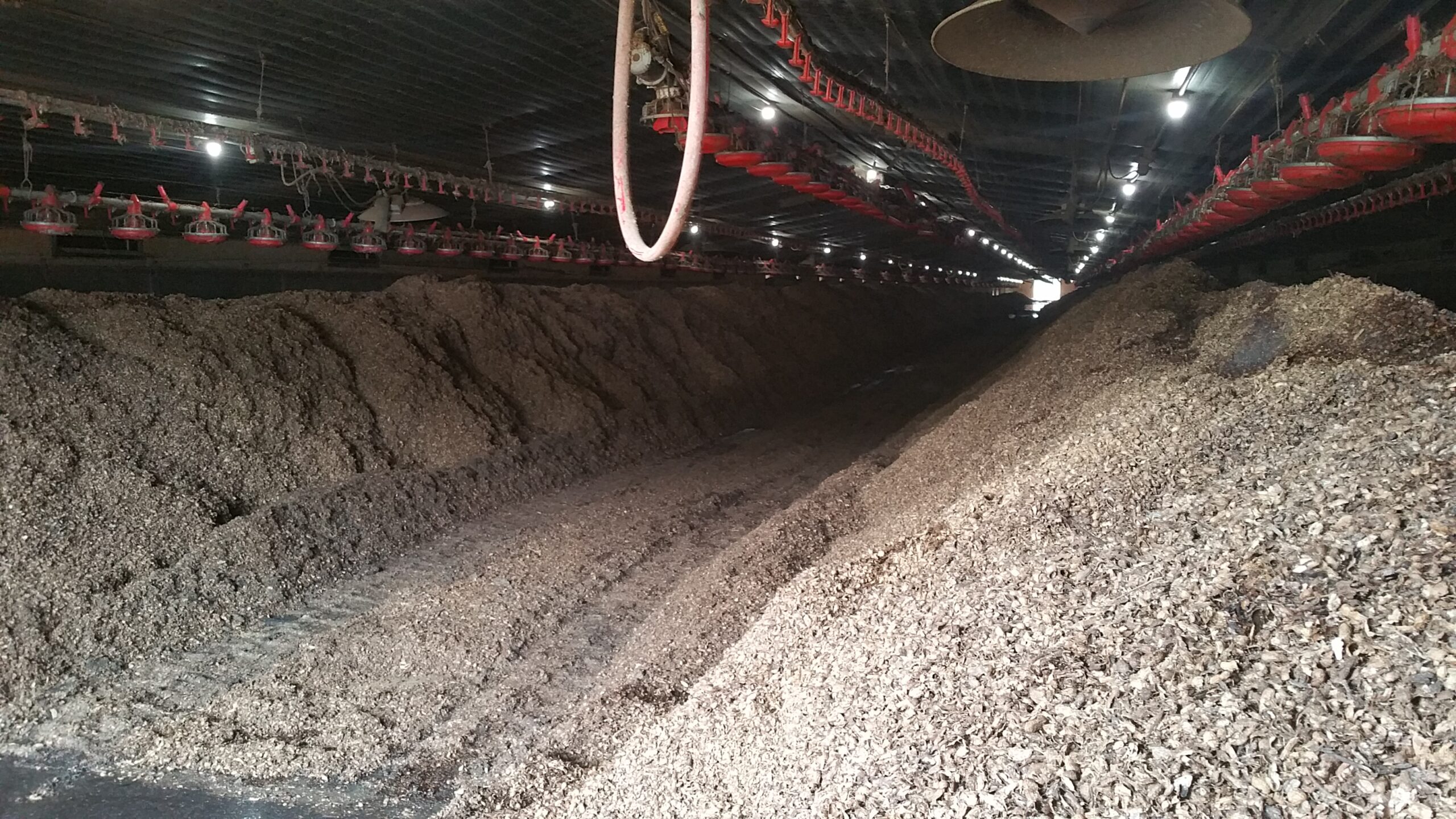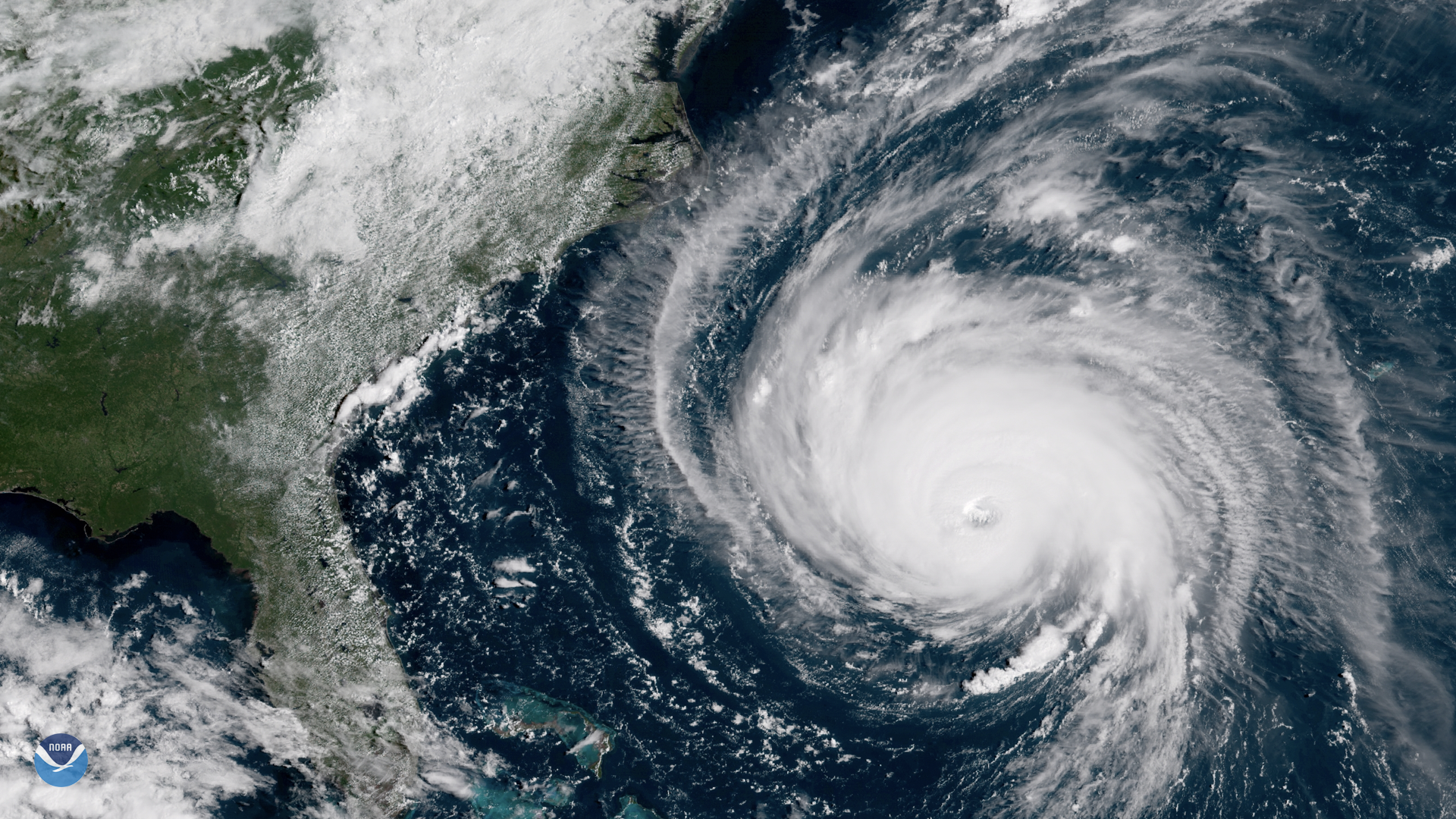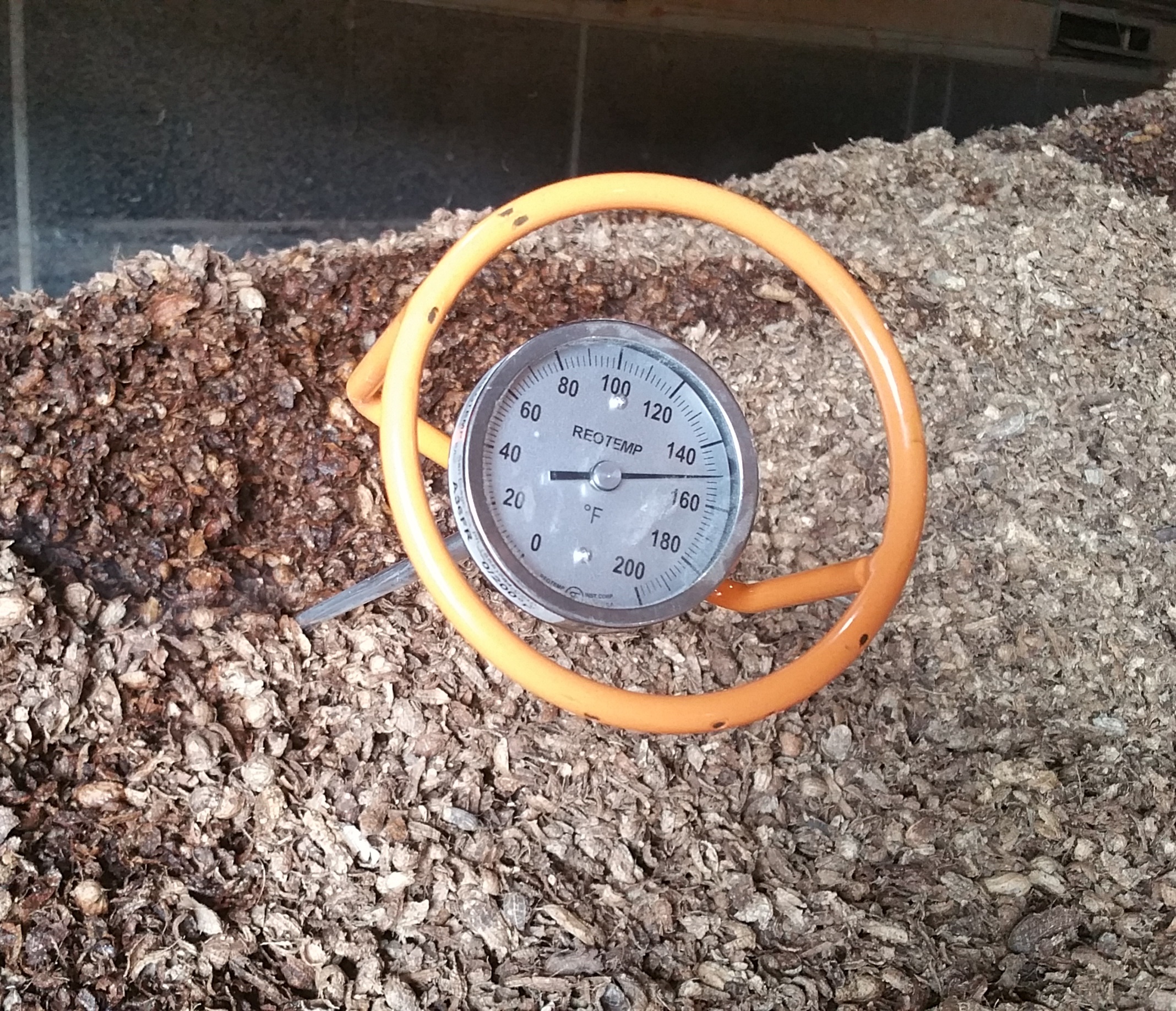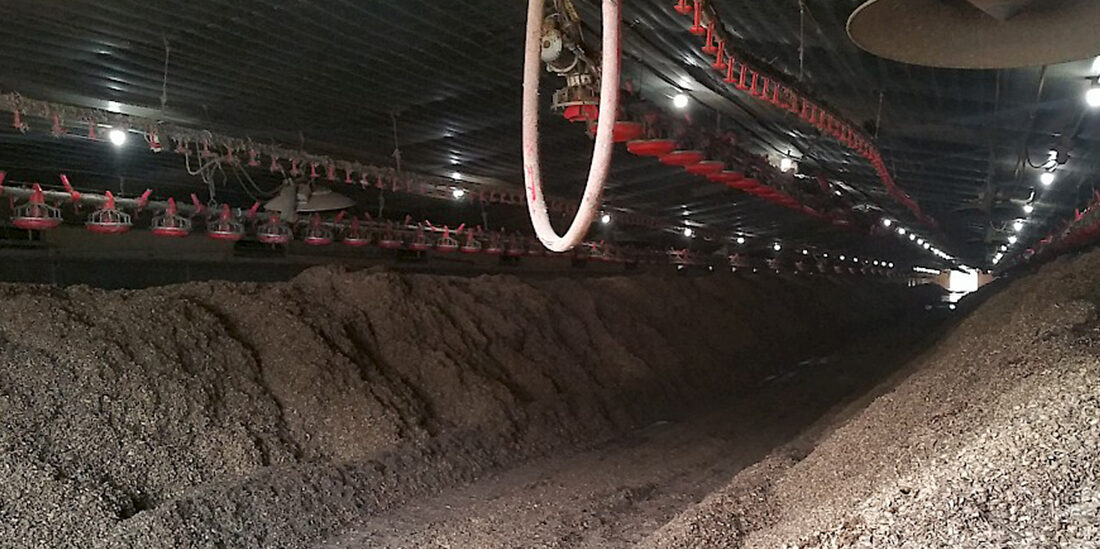Florence, the first major hurricane of the 2018 Atlantic hurricane season, made landfall as a Category 1 hurricane early on the morning of 14 September 2018 at Wrightsville Beach in the vicinity of Wilmington, North Carolina, with wind gusts of up to 105 mph. As the forecasted path of Florence indicated direct impacts to North Carolina – and a declaration of emergency was issued 7 days before landfall – the animal agriculture industry and the North Carolina Department of Agriculture and Consumer Services (NCDA&CS) began implementing emergency plans before the rain began. The NCDA&CS hurricane response structure was based on lessons learned during response to foreign animal disease outbreaks in the United States over the past several years, and was fine-tuned from experiences with Hurricane Matthew just two years prior.
By 17 September 2018, heavy rains had caused flooding throughout much of the state. More than 35 inches of rain fell on Elizabethtown, North Carolina, and 15 to 30 inches of rain across a number of coastal plain counties. Hundreds of square miles in central and eastern North Carolina were inundated with prolonged rainfall that resulted in “catastrophic and life-threatening flooding” (National Weather Service). More than 2,000 roads were closed, 900,000 people lost power, and thousands of homes were destroyed by floodwaters. Twenty-seven North Carolinians lost their lives.
Florence’s Impact on Agriculture
Many farmers in North Carolina did not escape the storm’s path of destruction. Because of the storm, more than half of the state’s 100 counties were included in a Presidential Disaster Declaration. Estimates of crop and livestock losses exceed $1.1 billion. These losses include $23 million for livestock, poultry, and aquaculture growers.
Fortunately, hog farmers were able to take aggressive actions before the storm to minimize impact, such as moving susceptible animals to higher ground or to other locations and procuring generators, fuel, and feed. Mitigation strategies implemented following Hurricane Floyd (1999) also resulted in over 100 swine lagoons in vulnerable flood plain areas of eastern North Carolina being closed through a state government buyout program. As a result of the storm’s path and mitigation strategies deployed before and during the storm’s impact, only 5,500 hogs died in the storm. At any given time, North Carolina’s hog farmers are raising approximately 9 million hogs on 2,100 farms.
Although also committed to aggressive actions before Florence’s arrival, the poultry sector did not fare as well, as there are more than twice as many poultry farms as there are swine farms with nearly 255 million poultry in the state. In the aftermath of Hurricane Florence, NCDA&CS responded to requests for assistance from 62 poultry farms with a total of 238 flooded poultry houses. Losses on these 62 farms included 4,052,740 chickens and 118,970 turkeys (NCDA&CS Poultry Veterinary Division Internal Database). One of the many challenges NCDA&CS faced was how to help these farmers dispose of poultry carcasses and saturated manure in a manner that would protect public health and the environment and would quickly get the farms back into operation. NCDA&CS needed to accomplish this monumental task while simultaneously completing other critical response activities in support of the agricultural sector.
Lessons Learned From Hurricane Matthew & the Highly Pathogenic Avian Influenza Outbreak of 2015
Just 2 years before Florence, Hurricane Matthew struck the North Carolina coastline and caused significant flooding, which killed 1.8 million chickens and turkeys. To respond to this disaster, the NCDA&CS adopted practices previously developed to manage mortality during the Highly Pathogenic Avian Influenza (HPAI) outbreak in the Midwestern United States in 2015.
That outbreak in 2015 was the largest animal disease outbreak in U.S. history. It tested the limits of state and federal disease response capabilities, while clearly demonstrating that composting poultry mortality on a massive scale is feasible, effective, and environmentally protective.
The predominant method for the management of poultry mortality during the HPAI outbreak was composting. Composting had not been implemented at this scale during previous avian influenza outbreaks, although it had been proven effective during smaller outbreaks in Maryland, Virginia, and West Virginia. Of the 50 million birds that died during the outbreak, more than 75% were composted (USA Experience and Lessons Learned from HPAI Outbreak in 2014/15) on the farm either inside the poultry houses or outside in windrows – long rows of compost about 12 feet wide and 6 feet tall (see Figures 1-2). Composting is a natural, biological process that inactivates most pathogens, including the avian influenza virus, and breaks down the carcasses into a stable organic material that can be utilized as a soil amendment. Composting on this scale, however, requires significant expertise to oversee proper construction and monitoring of the windrows to ensure pathogens are inactivated and the end product is safe for farmers to use.

The U.S. Department of Agriculture Animal Plant Health Inspection Service (USDA-APHIS) called on mortality management subject matter experts (SMEs) from around the United States to oversee the composting activities. To ensure this process was implemented consistently from farm to farm, USDA established a Composting Technical Committee comprised of SMEs who developed protocols for composting both poultry and livestock during previous disease outbreaks and natural disasters.
During the Hurricane Matthew recovery effort, NCDA&CS modified the HPAI composting protocols to account for the flooded conditions. The Federal Emergency Management Agency (FEMA) provided financial assistance for purchase of wood shavings and other carbon materials needed for the composting process by way of a first of its kind public assistance grant for the protection of public health and the environment. The protocol was implemented by NCDA&CS staff, as well as staff from other state agencies, who were trained on the composting protocol. Though effective, this prolonged effort took NCDA&CS and other agency staff away from other critical recovery operations, as well as from normal job functions. As a result of an after action review done following the Matthew response, NCDA&CS considered contracting out portions of the response activities for future natural disaster events.

Hurricane Florence 2018
With Hurricane Matthew still fresh on North Carolinian’s minds, Hurricane Florence arrived in September 2018 (see Figure 3). The devastating storm killed more than twice as many birds as Hurricane Matthew and impacted many more poultry farms. In the immediate aftermath of Florence, NCDA&CS chose to contract out the main elements of the response and recovery effort for flooded poultry houses. By doing so, their staff was able to manage other aspects of the entire agricultural recovery effort and focus efforts on the oversight of the contractors to ensure a rapid and efficient response. NCDA&CS developed and executed contracts for the three main components of recovery operations: subject matter expertise for composting, equipment operations for moving materials and compost windrow construction, and carbon materials sourcing and delivery.

Contractors with natural disaster experience were available for both equipment operation and the procurement and delivery of carbon material. Equipment operators with significant experience working in and around poultry houses brought critical safety and efficiency to response operations. An environmental services firm with experience moving debris during numerous hurricane events provided carbon materials sourcing and delivery at the scale necessary for a timely response. A USDA-APHIS model for deploying and managing critical compost subject matter expertise proved very effective for the Florence response. During previous disease outbreaks, composting oversight was provided by individual SMEs contracting independently with USDA. Although effective, the process of contracting with individual SMEs was cumbersome for USDA. Following recent outbreaks, USDA chose to contract with a single entity that could provide continuous composting oversight with multiple SME personnel. This same model worked well for NCDA&CS by streamlining the contracting process and eliminating the need to coordinate the deployment of individual SMEs for the Florence response.
Poultry Farm Recovery After Hurricane Florence
The Florence response framework was built on a series of interrelated steps requiring highly coordinated interaction among NCDA&CS, specialized contractors, and farms. The response strategy operated as follows: a poultry grower needing assistance with a flooded poultry farm contacts NCDA&CS through a publicized hotline established for the emergency. Once the grower requests assistance, an SME contacts the grower to schedule a site visit to assess damages. This assessment includes site-specific information: number of birds killed, size of the poultry houses, amount of litter present, depth of water remaining, safety and structural integrity of buildings, composting locations, and other site-specific information. Additionally, the SME calculates the volume and type of carbon material needed to compost the mortality and/or poultry litter, which varies depending on site-specific impacts of flooding at the location.

During the assessment, the grower is able to choose the level of assistance desired to solve the emergency needs identified on his/her farm: carbon material for composting, equipment and operators, composting oversight, or any combination of these resources. Once the assessments are complete, farms are prioritized for recovery operations. For example, farms with large birds are given higher priority than farms with smaller or no birds. Other factors considered include the electrical safety of the building, if feeders and waterers have been raised, and if floodwaters have receded sufficiently to allow access to the site.
Once a farm is scheduled for recovery operations, all components are coordinated through the response team, including the delivery of carbon, movement of equipment and operators to the site, and the deployment of a composting SME. The SME confirms the volume and type of carbon needed, the location of composting operations, and site-specific considerations such as the amount of water remaining in the building, ceiling height, and availability of land for composting.
The use of composting for mitigating potential negative impacts of flood damaged poultry farms requires large amounts of carbon materials, the majority of which needs to be relatively dry. Although mulch materials and wood chips are abundant in North Carolina, locating dry, fine, and absorbent materials in reasonable proximity to impacted farms proved difficult in the first weeks following Florence’s landfall. The compost SMEs evaluated a number of materials from a variety of source sites to find suitable materials in sufficient quantity, and then worked with those suppliers and the transportation team to achieve the scale of daily product movement required to meet the resource needs of field operations.

One of the primary roles of the composting SMEs is to oversee the windrow composting process. The first part of that process is to remove excess water from the poultry houses by either pumping it into a tank for direct land application, or incrementally adding carbon to absorb the excess water. If the composting operations occur in the house, then a center aisle is cleared of birds and litter and a base of clean carbon is added to the aisle. A mixture of carbon, birds, and litter from the rest of the house is placed on the base to create a windrow in the center of the house. A cap of clean carbon is then added on top of the windrow.
If composting is conducted outside, the carbon base is formed in an appropriate location and the mixture of carbon, birds, and litter are transported to the composting site and placed on top. Finally, a cap of clean carbon is placed on top the windrow.
Regardless of the location, windrow temperatures are monitored daily to confirm that the windrow construction is sufficient to decompose the carcasses and inactivate harmful pathogens (see Figure 4-6). After the satisfactory completion of the composting process is approved by the SME, the material is released for land application as a soil amendment, or for temporary stockpiling and later land application.

Using This Experience to Respond to Future Natural Disasters
As demonstrated during the Hurricane Florence response, composting has the potential to be a valuable waste management tool during natural disasters. Composting can help solve the immediate needs of protecting public and the environment, provide the basis for a rapid agricultural recovery, and create a safe product for beneficial reuse in agricultural systems.
Not only can it be used with animal carcasses and manure, but composting can also be used to manage a wide variety of waste streams generated during natural disasters. For example, hurricanes generate millions of tons of trees and tree limbs. Burning this wood debris can generate smoke and odors in areas already experiencing significant environmental damage. Alternatively, composting this debris can produce a beneficial soil amendment that can be used in impacted communities to remediate eroded soils. Another common disposal method – burying woody debris at landfills – occupies costly landfill space that could be used for the disposal of inorganic materials like household waste following a natural disaster.
Implementing composting more broadly during future natural disasters will require prior planning at a state or federal level to ensure the resources and expertise are available to manage a large-scale composting operation. The NCDA&CS’s thoughtful planning before Hurricane Florence, which incorporated lessons learned from disease and disaster events across the United States, is a successful model of the effort needed to execute composting on a large scale in the agricultural sector for disaster response.
Significant contribution to this article was provided by Robert Peer, agricultural program coordinator for the Virginia Department of Environmental Quality and composting subject matter expert and consultant on animal carcass disposal.

Gary Flory
Gary Flory is the agricultural program manager for the Virginia Department of Environmental Quality and an independent global consultant, trainer, and speaker in the areas of emerging infectious diseases, counter-agroterrorism, One-Health, and animal carcass disposal. He has conducted training, given presentations, and deployed on animal disease outbreaks to a number of countries including the Dominican Republic, Vietnam, Tunisia, Korea, Cambodia, Laos, Malaysia, and Azerbaijan. He supports a variety of organizations including the United States Department of Agriculture, the Food and Agriculture Organization of the United Nations (FAO), and the World Organization for Animal Health (OIE). He currently serves on FAO’s African Swine Fever Global Pool of Expertise. In addition to numerous other articles, reports, and guidance documents, he was a lead author of FAO’s recently released, “Carcass management guidelines – Effective disposal of animal carcasses and contaminated materials on small to medium-sized farms” and USDA’s “Catastrophic Livestock Composting Protocol and Mortality Composting Protocol for Avian Influenza Infected Flocks.” He can be contacted at garyaflory@gmail.com.
- Gary Floryhttps://domesticpreparedness.com/author/gary-flory
- Gary Floryhttps://domesticpreparedness.com/author/gary-flory
- Gary Floryhttps://domesticpreparedness.com/author/gary-flory

Joseph Hudyncia
Joseph Hudyncia is environmental programs specialist for the North Carolina Department of Agriculture & Consumer Services and supports the Department animal disease and natural disaster response.
- This author does not have any more posts.






